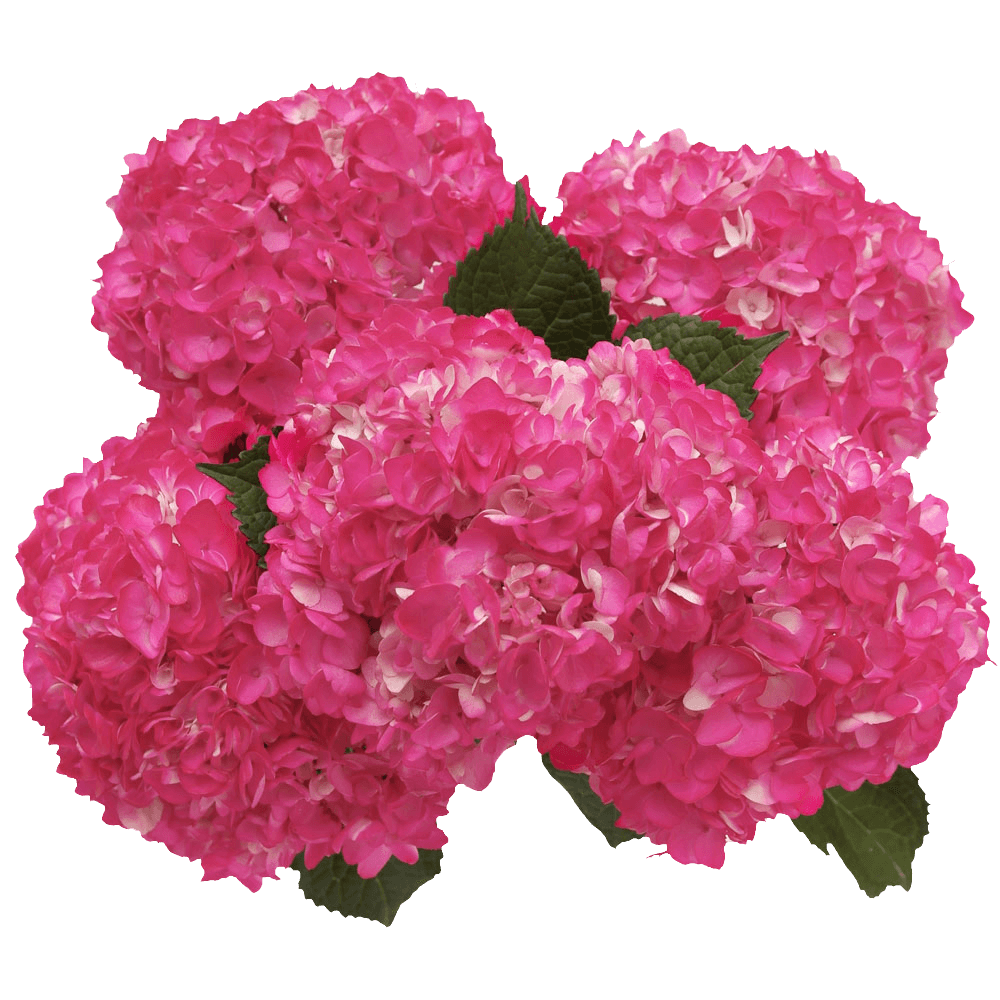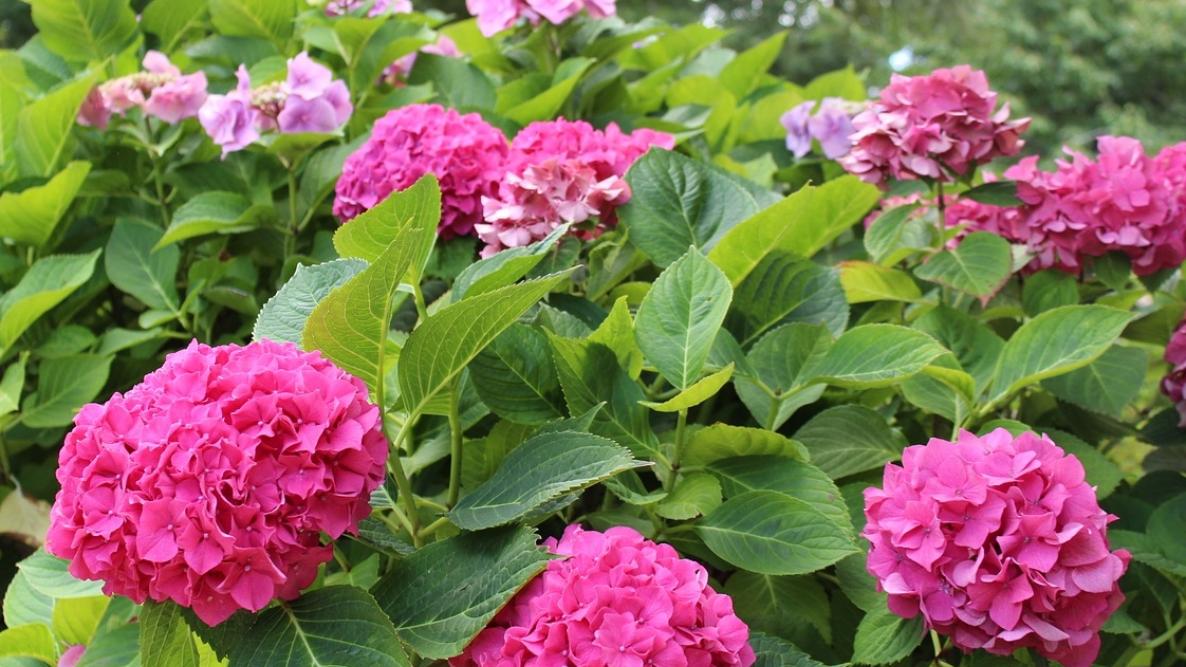Hot Pink Hydrangeas: The Ultimate Guide To Growing And Caring For These Beautiful Flowers
Hot Pink Hydrangeas: The Ultimate Guide to Growing and Caring for These Beautiful Flowers
Hydrangeas are some of the most popular flowering shrubs in the world, and for good reason. They come in a wide variety of colors, sizes, and shapes, and they can be grown in a variety of climates. Hot pink hydrangeas are a particularly popular variety, and they are known for their vibrant blooms.
If you are thinking about adding hot pink hydrangeas to your garden, there are a few things you need to know about how to grow and care for them. In this blog post, we will provide you with an ultimate guide to growing hot pink hydrangeas.
Choosing the Right Location
The first step to growing hot pink hydrangeas is to choose the right location. Hydrangeas prefer full sun to partial shade, but they should not be planted in direct sunlight during the hottest part of the day. They also need well-drained soil. If your soil is too clayey, you will need to add some sand or compost to improve drainage.
Planting
The best time to plant hot pink hydrangeas is in the spring or fall. When planting, dig a hole that is twice as wide as the root ball of the plant. Backfill the hole with soil, and water the plant well.
Fertilizing
Hydrangeas need to be fertilized regularly to produce their best blooms. You can fertilize your hydrangeas with a balanced fertilizer, such as 10-10-10, in the spring and fall. You can also use a fertilizer specifically designed for hydrangeas.
Watering
Hydrangeas need to be watered regularly, especially during the first year after planting. Water your hydrangeas deeply once a week, or more often if the weather is hot and dry.
Pruning
Hydrangeas do not need to be pruned heavily, but you should remove any dead or diseased branches in the spring. You can also prune your hydrangeas to control their size and shape.
Overwintering
In most climates, hot pink hydrangeas do not need to be protected from the winter. However, if you live in an area with cold winters, you may want to mulch your hydrangeas to protect their roots from the cold.
Troubleshooting
If your hot pink hydrangeas are not blooming, there are a few things you can check. Make sure that your hydrangeas are getting enough sunlight. If they are not, move them to a location with more sun. You should also check the soil pH. Hydrangeas prefer a soil pH of 5.5 to 6.5. If the soil pH is too high or too low, your hydrangeas may not bloom.
Conclusion
Growing hot pink hydrangeas is a relatively easy task. By following these tips, you can enjoy these beautiful flowers in your garden for many years to come.
If you're looking for a beautiful and vibrant flower to add to your garden, look no further than the hot pink hydrangea. These stunning blooms are sure to turn heads, and they're relatively easy to care for.
Hot pink hydrangeas are native to Japan, but they can be grown in most parts of the world. They prefer full sun to partial shade, and they need well-drained soil. If you live in an area with alkaline soil, you may need to add sulfur to the soil to lower the pH, which will help the hydrangeas turn pink.
Hot pink hydrangeas are typically in bloom from late spring to early fall. The flowers can grow up to 12 inches in diameter, and they make a stunning addition to bouquets or flower arrangements.
If you're interested in learning more about hot pink hydrangeas, I recommend visiting . This website has a wealth of information about the flower, including its history, care, and cultivation.
FAQ of hot pink hydrangea
Q: What causes hydrangeas to be hot pink?
A: The color of hydrangea flowers is determined by the acidity of the soil. In acidic soil (pH 5.5-6.5), hydrangeas will bloom blue. In alkaline soil (pH 6.5-7.5), hydrangeas will bloom pink. Hot pink hydrangeas are typically grown in alkaline soil with a pH of 6.0-6.2.
Q: How do I keep my hydrangeas hot pink?
A: There are a few things you can do to keep your hydrangeas hot pink:
- Grow them in alkaline soil with a pH of 6.0-6.2.
- Apply a high-phosphorus fertilizer to further discourage the uptake of aluminum.
- Avoid using aluminum sulfate or other acidic fertilizers.
- Water your hydrangeas with rainwater or well water, as tap water can sometimes be acidic.
Q: What are some other factors that can affect the color of hydrangea flowers?
A: In addition to soil acidity, the following factors can also affect the color of hydrangea flowers:
- The age of the plant. Younger plants tend to bloom blue, while older plants may bloom pink or even white.
- The amount of sunlight the plant receives. Hydrangeas that receive more sunlight tend to bloom blue, while those that receive less sunlight tend to bloom pink.
- The temperature. Cooler temperatures can encourage pink blooms, while warmer temperatures can encourage blue blooms.
Q: What are some tips for growing hot pink hydrangeas?
A: Here are some tips for growing hot pink hydrangeas:
- Plant them in a location that receives full sun or partial shade.
- Water them regularly, especially during hot, dry weather.
- Fertilize them in the spring with a high-phosphorus fertilizer.
- Mulch around the plants to help retain moisture and suppress weeds.
- Protect them from frost in the winter.
Image of hot pink hydrangea
- Image 1: A close-up of a single hot pink hydrangea flower. The petals are a deep, vibrant pink color and they are arranged in a delicate spiral.

- Image 2: A cluster of hot pink hydrangea flowers in full bloom. The flowers are arranged in a large, rounded head and they are surrounded by lush green leaves.

- Image 3: A hydrangea bush covered in hot pink flowers. The flowers are a variety of shades of pink, from light pink to deep pink.

- Image 4: A hot pink hydrangea in a vase. The flowers are arranged in a simple vase and they add a touch of beauty to any room.

- Image 5: A hot pink hydrangea against a blue sky. The flowers are a bright pink color and they stand out against the blue sky.

Post a Comment for "Hot Pink Hydrangeas: The Ultimate Guide To Growing And Caring For These Beautiful Flowers"